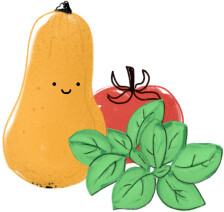Buchsbaumgewächse Standardsorte

Variety
Buchsbaumgewächse Standardsorte
created by Alex&Sempi at 01.03.2025
Features
Location
planting: outdoor
sheltered from the wind
planting: house wall / wall
Soil: permeable soil
soil moisture: no waterlogging
Fertilization: single dose of compost
fertilization: humus-enriched
Soil: medium-heavy
Water: regularly
Soil: sandy to loamy
Light: Semi-Shade
Water: Adequate
Planting: hedge
Planting: rock garden / alpine garden
Growth habit
root type: shallow-rooted
Cold germination
seed-fixed: yes
ornamental plant
leaves: evermoist
Resistances
Winter hardy
Taste
not edible
Season Overview
Propagating
Planting
Harvest
Harvest
J
F
M
A
M
J
J
A
S
O
N
D
1ST YEAR
FOLLOWING YEARS
Description
The boxwood family (bot. Buxaceae) is a plant family belonging to the order Buxales (boxwoods). The Buxaceae family includes six genera comprising around 100 species. The boxwood plants are found all over the world as perennials, evergreen shrubs and, more rarely, as trees. Boxwoods prefer temperate to tropical zones for their distribution. The only species found in Central Europe is the common boxwood (Buxus sempervire). This is often found here as an ornamental shrub. Leaves The leaves have a leathery, whole-margined structure. The opposite or alternate leaves have smooth to toothed leaf edges. Some species also have helically arranged leaves. Boxwoods do not have stipules. Flowering The boxwood family has male and female flowers, which are arranged in inflorescences or individually in a radial pattern. The male flowers consist of four perianth petals and four to six stamens. Female flowers, on the other hand, have six perianths and three carpels, which are fused to form a rudimentary, upper ovary. The flowers of most species have a white-yellowish hue. Fruit Depending on the species, box plants form a drupe or a capsule fruit. The mostly blue-green, split open capsules contain two to six black seeds. Growth Depending on the species, boxwoods can reach a height of up to 20 meters in their area of distribution. They grow in the form of shrubs, perennials and trees. Distribution The boxwood family is mainly found in southern Europe and western Asia. In southern Germany, boxwoods are mostly found on south-facing slopes. Utilization As boxwoods have a high utility value as a garden plant, many different cultivars have emerged from the family. This results in a wide variety of leaf colors and shapes. Boxwoods tolerate pruning well. This allows many design options in the form of borders, hedges or geometrically shaped cuts of individual plants. The hard, pale yellow wood of our native species has very fine, narrow growth rings and is suitable for woodturning and carving. The wood is used in the manufacture of wind instruments such as flutes and clarinets. In the past, the wood was popular for engraving work.
F1 Hybrid
Not frost resistant
Growing tips
Choice of location
Details
Light requirement
Semi-shaded
Water requirement
Moist
Soil
Medium (loamy)
Nutrient requirement
High
Dark germinator
Germination temperature
20 - 25 °C (Degrees Celsius)
Plant distance
50 cm
Row spacing
50 cm
Seeding depth
1 cm
Antagonistic Plants
Diseases
Root Rot
Pests
Spider mites
Schildläuse